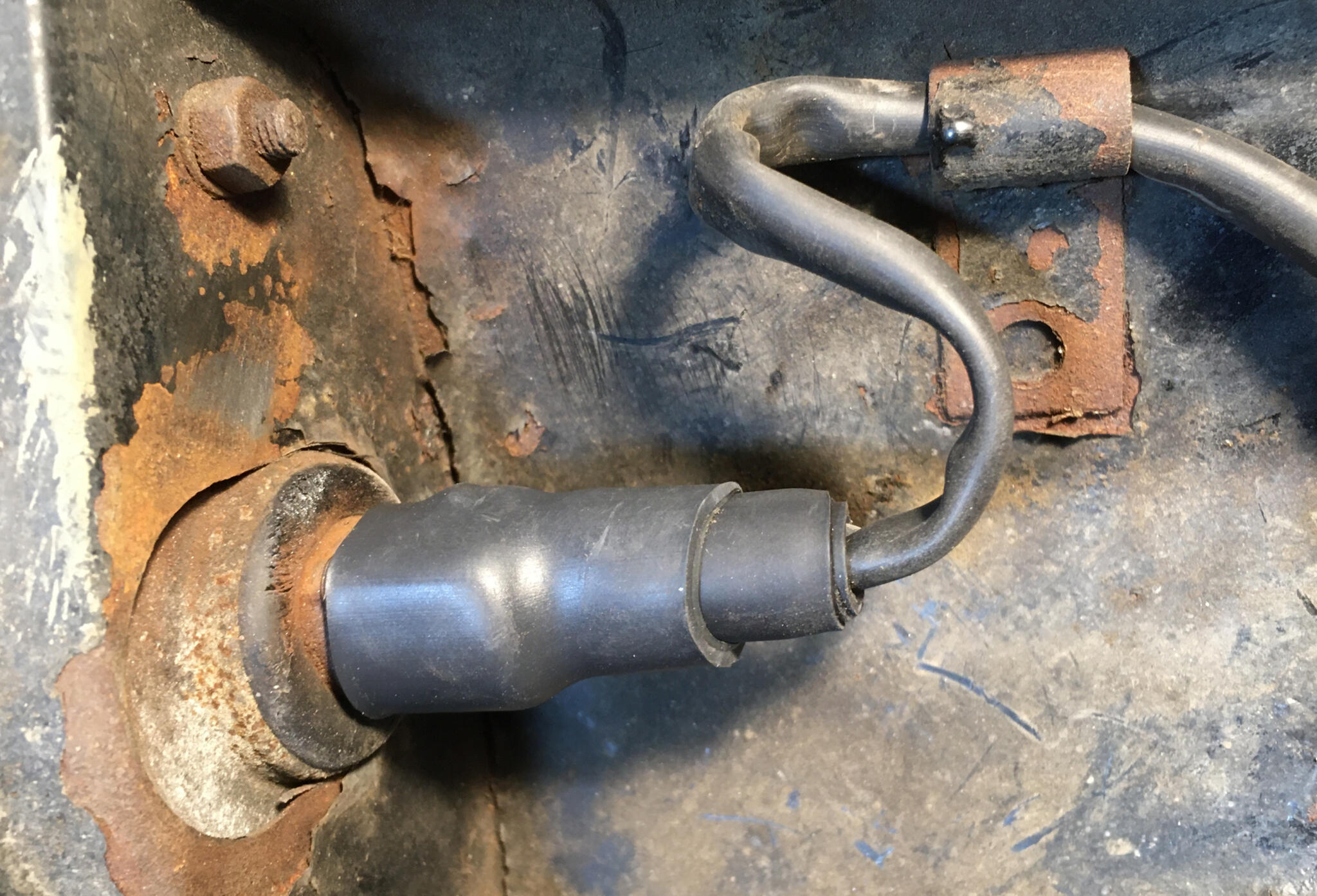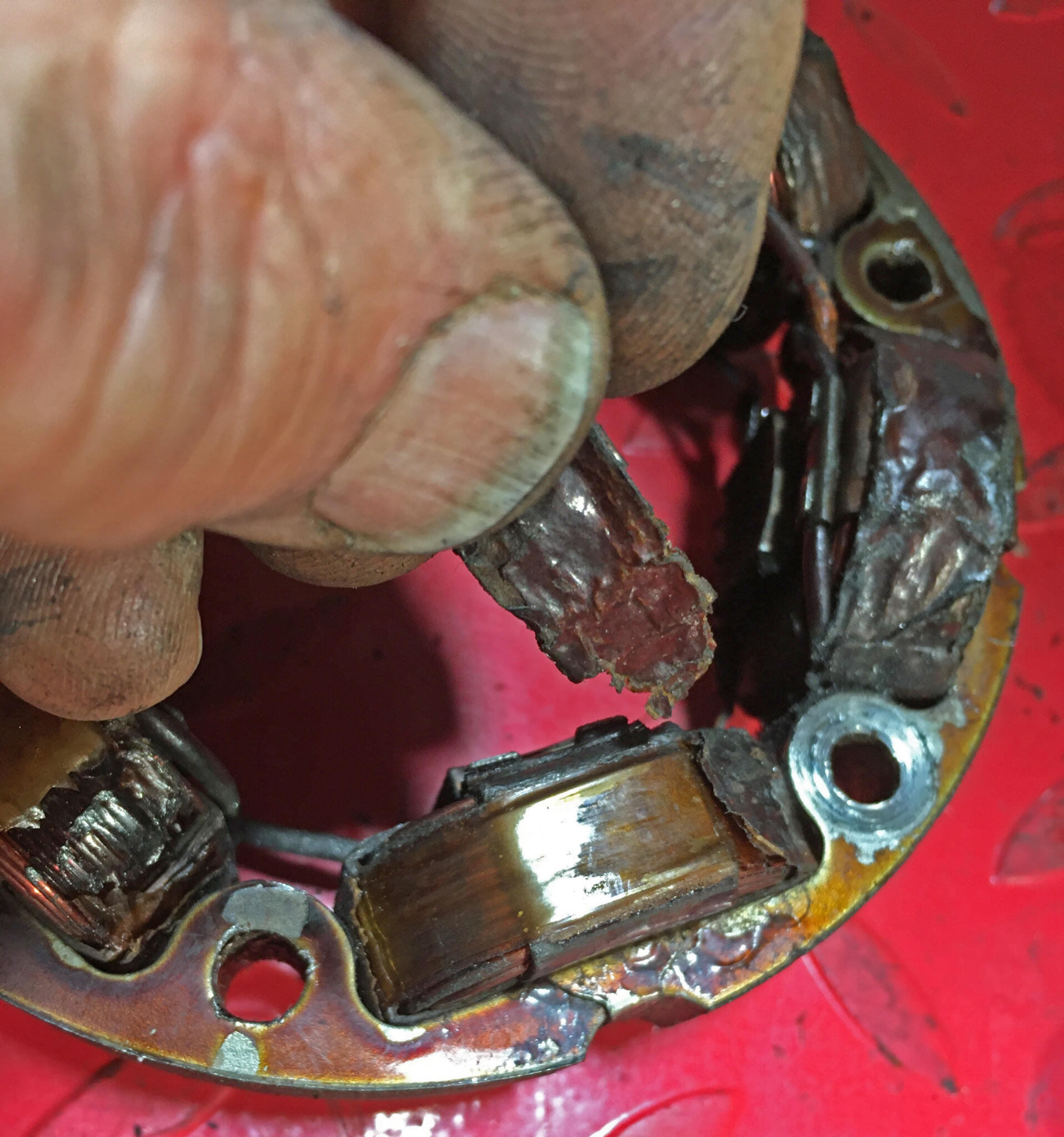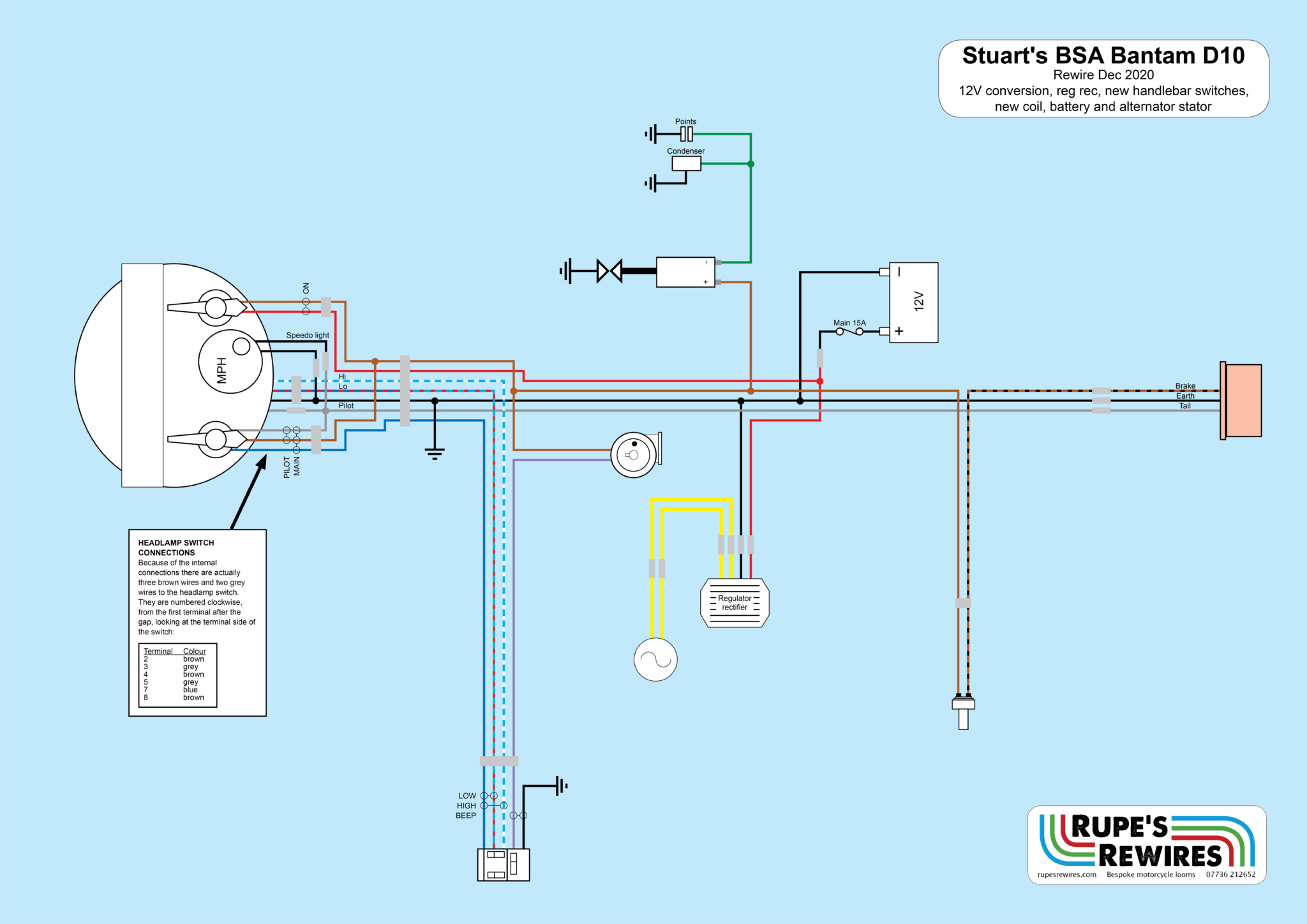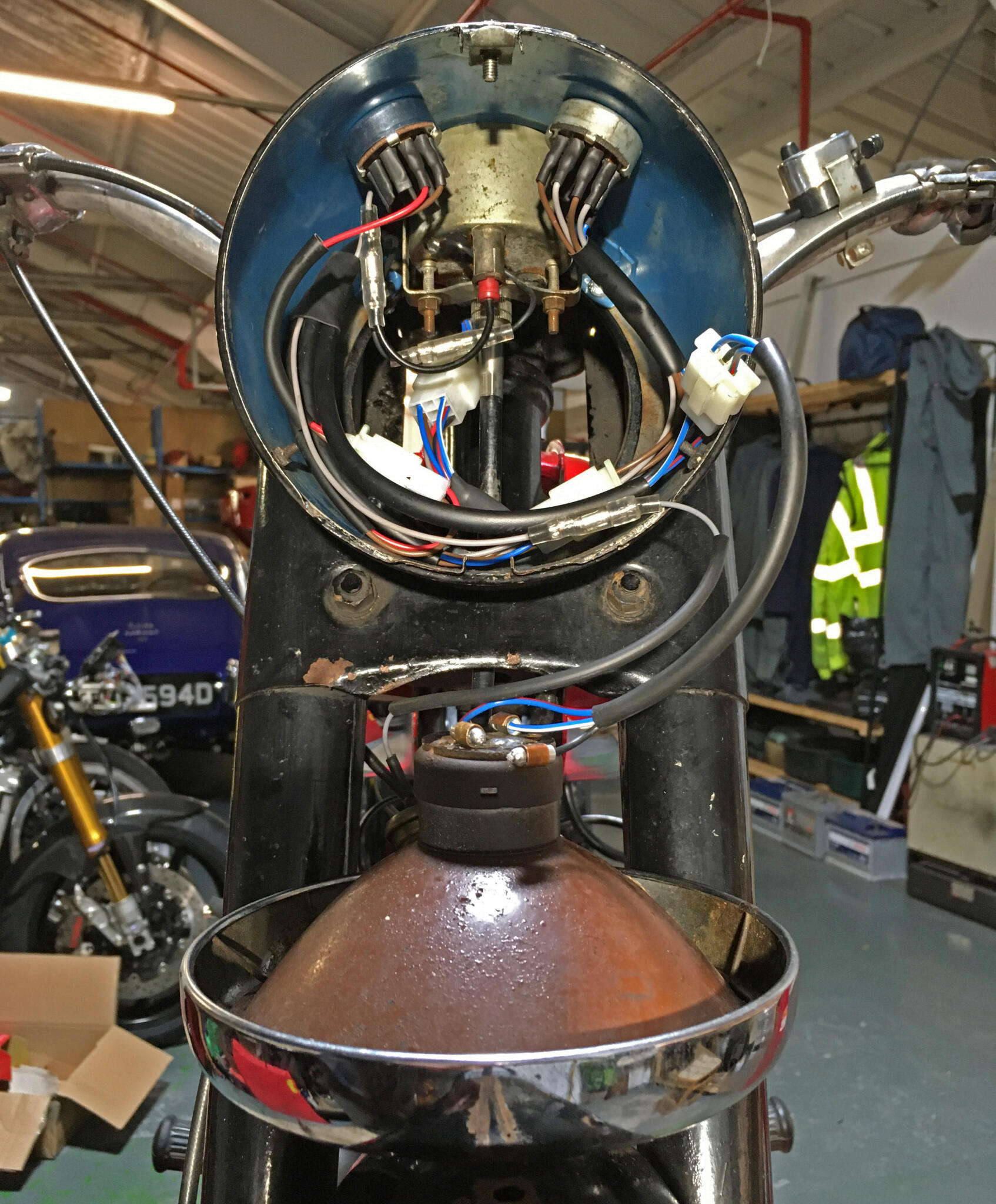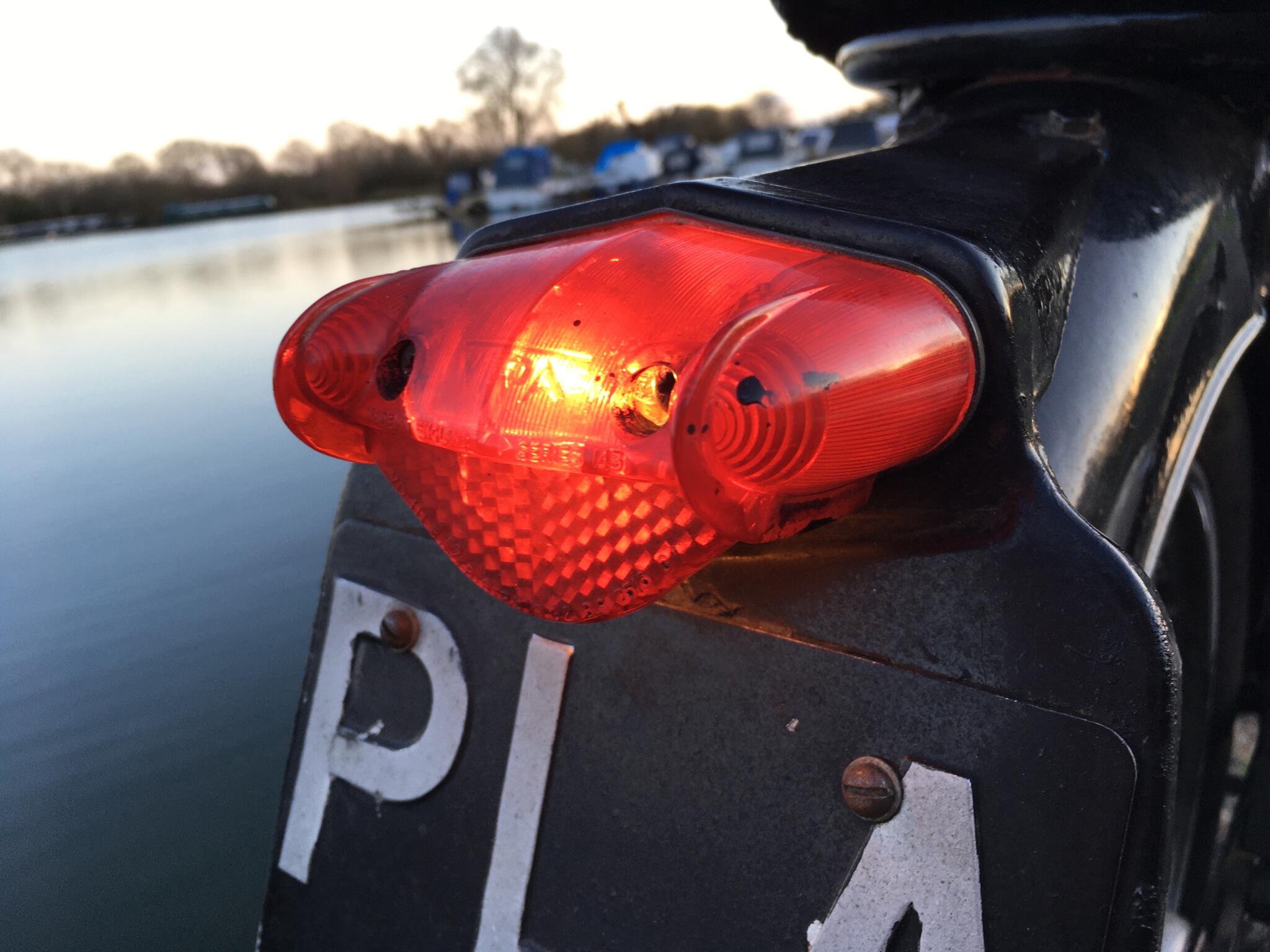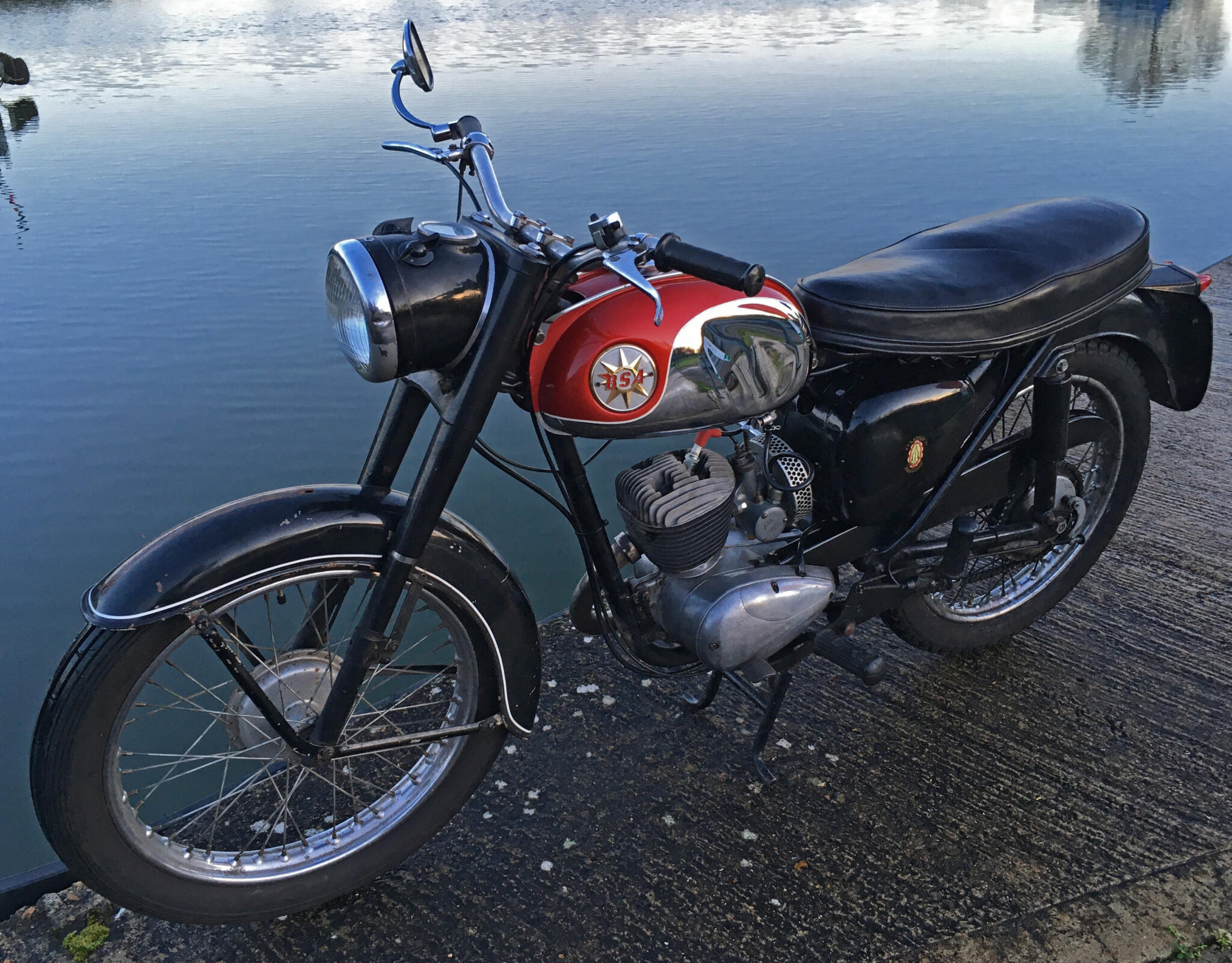
The D10 Bantam is a decent looker thanks to that gorgeous petrol tank. BSA always did the best half-chrome tanks
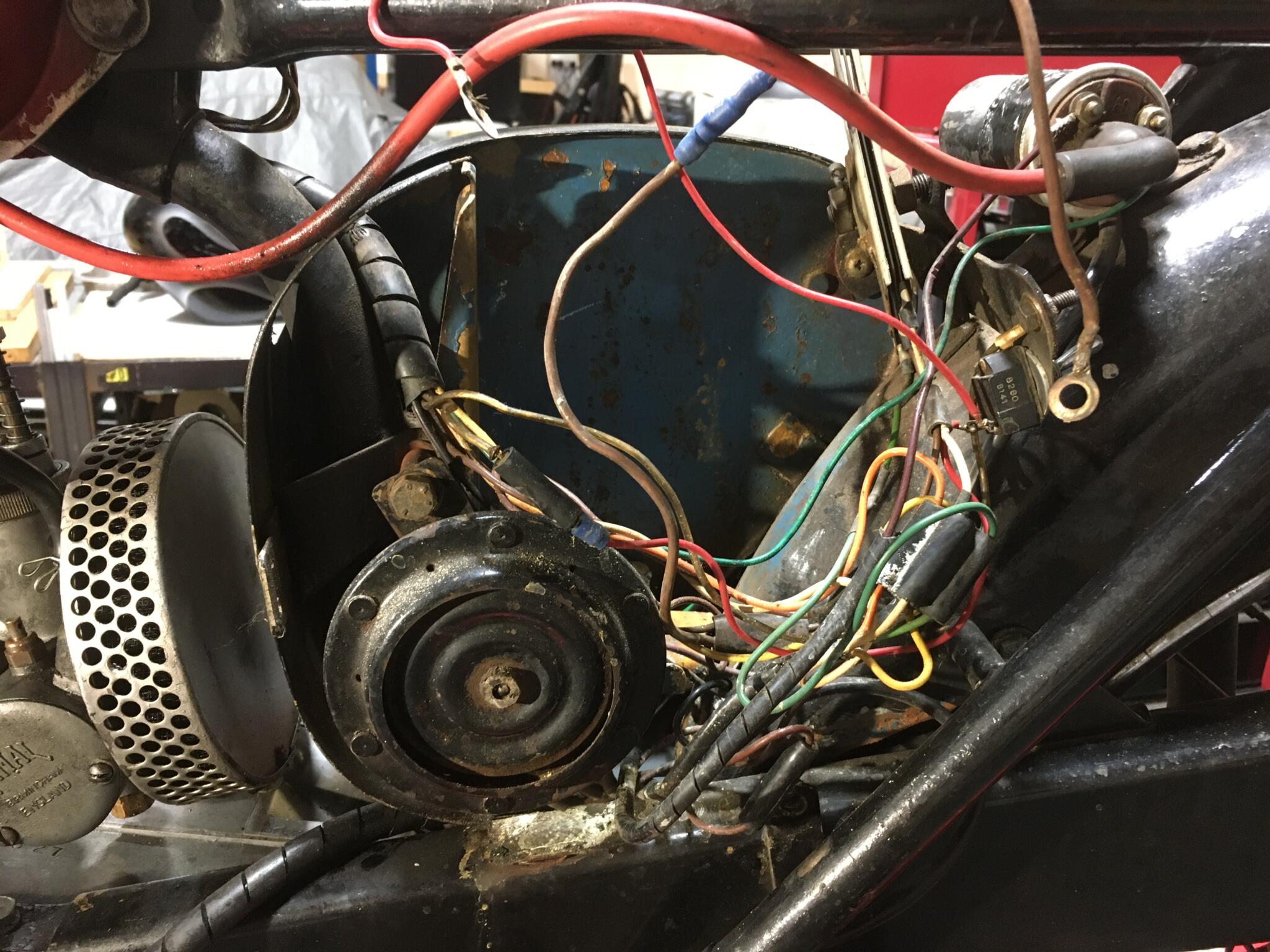
A typical starting point: 50 year-old wiring, enthusiastically modified by several generations of previous owners
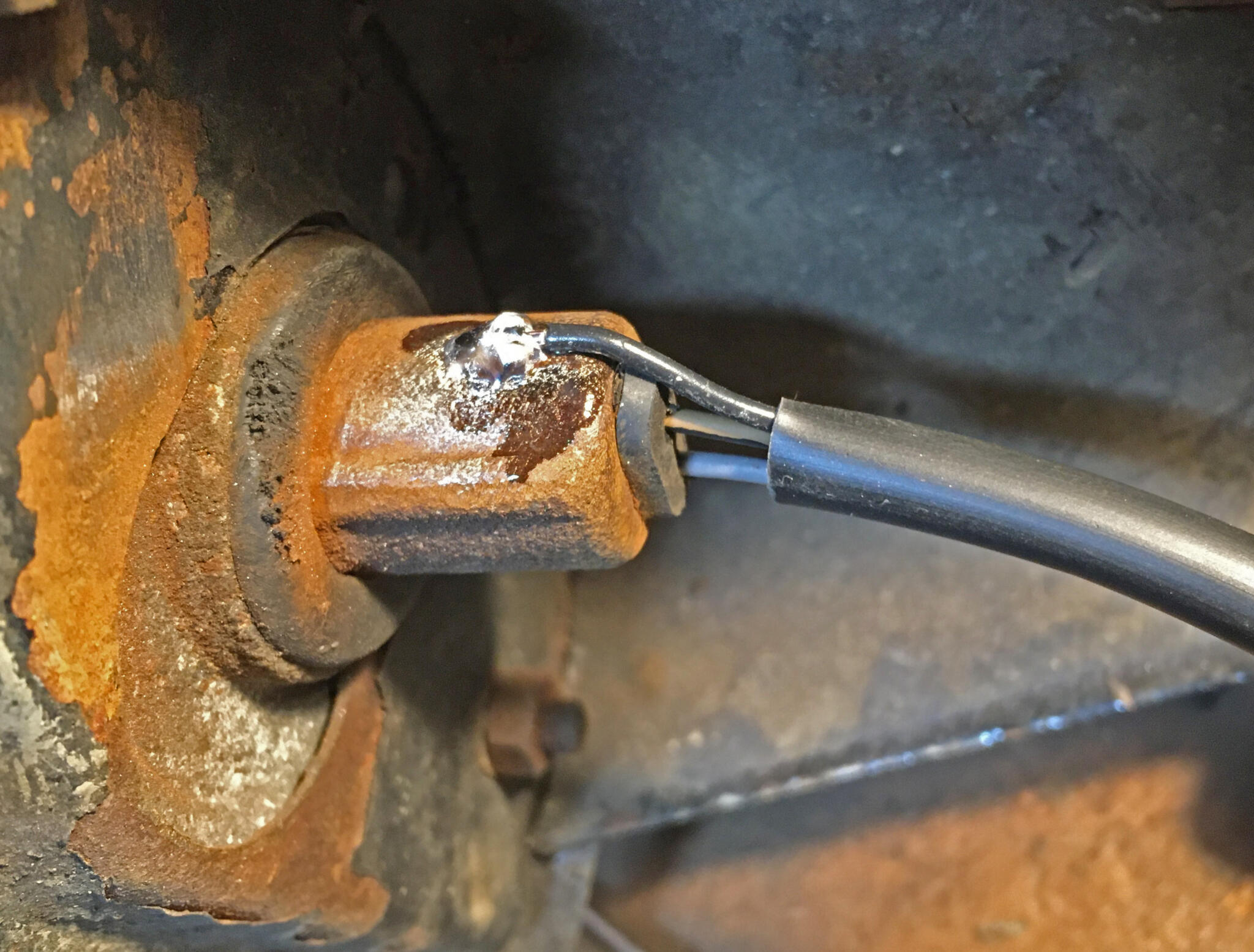
The Wipac tail light relies on the earth returning through the mudguard – not ideal once rust has set in. I replace the wires and bulb contacts, and solder an earth to the bulb holder body.
Stuart’s BSA Bantam D10 12 volt conversion
A Bantam is such a small, simple bike you would think that converting one to 12V operation would only take a morning. In fact, it’s about two days if you do it properly.
12V conversions are a really good idea. If you want to ride at night, or even have your indicators visible in the day, it’s a no-brainer. But… you would be daft to undertake this work on a 1960s bike without chucking away all the old wiring while you’re about it.
And… before you drop in the new wires you need to restore and/or replace the relevant peripheral parts. And that’s what takes the time. Stuart’s bike is typical of most old Brit bikes I work on. They usually have the same problems – and solutions – as the ones you see here.
The basic principle is to examine everything and ensure you create good connections. Don’t rely on through-the-frame earths; make a full earth loom. I like to seal all Japanese bullet terminals with a crimped short section of 3mm PVC sleeving. And paint the insulator and terminal with the obligatory silicone grease.
The conversion needs: a 12V battery, a 12V regulator rectifier, a new alternator stator, 12V bulbs and a 12V ignition coil. I got the ones here from Goffy Electrical. £212 well spent. The ignition condenser can stay (if it’s in good shape) and the horn usually copes with the higher voltage. The bike’s original emergency start switching will no longer work, but then again it won’t have 1967 wiring any more.
If you use the parts above, the wiring diagram here will work for any Bantam or any other small Brit with biscuit tin switchgear, original ignition and no indicators.
Stuart was delighted with the brightness of the lights. And the fact that the bike now starts first kick.
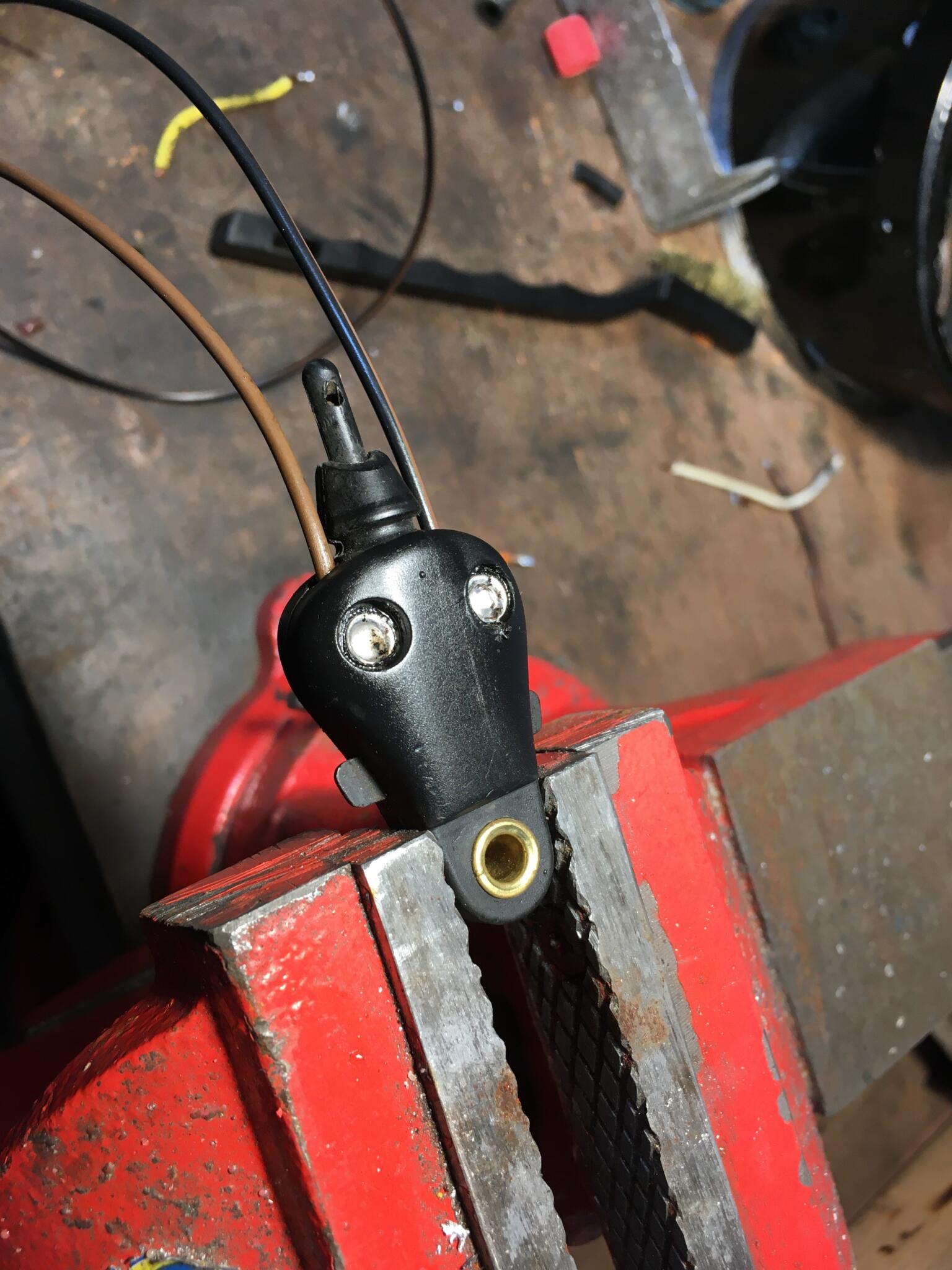
The rear brake light switch originally used little grub screws to grip the cables. That never lasts long without broken strands. I chuck the screws and solder the wires in. Same with the left handlebar switch (hi/lo, beep)

You can get replica headlamp switches branded as Emgo. The ignition switch (left) is new, while the light switch (right) is an original Wipac
